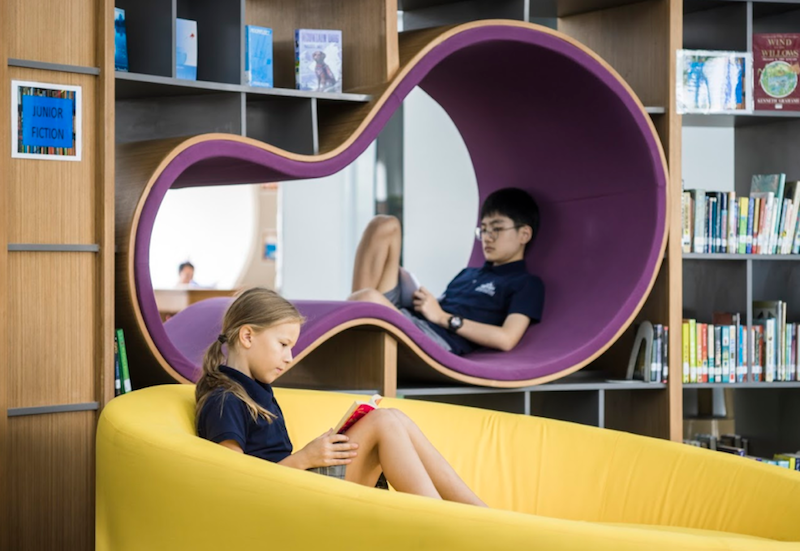ISHCMC has positioned itself with its new facilities as taking a leading role in transformative learning experiences that reflect key pathways to knowledge and the mastery of skills, as recognized by forward-thinking schools worldwide. Under the school’s evolving system, students are increasingly encouraged to branch out on their own inquisitive journeys, guided by teachers to discover pathways ahead in learning for themselves. Knowledge acquisition can take place anywhere in the school, and the campus designs provide students with opportunities and environments to consistently take their understanding to the next level.
What’s lesser known about ISHCMC’s evolution is the long-term renovation schedule that is currently underway in the school’s existing campus, which is just as in line with the modern teaching methodologies practiced at ISHCMC as is the design of the new school. Enhancements to the current campus—which will serve as the primary school once the new campus formally opens—have been introduced to facilitate students’ individualized learning experiences, bringing them greater capacities to adapt to 21st century work and lifestyle environments.

In the summer of 2015/16, ISHCMC undertook a renovation of its existing grade 4/5 areas, opening broader spaces and installing wider corridor areas for students to use as breakout collaborative workspaces, where they are encouraged to “crowdsource” their thinking and to use the walls’ writing surfaces as part of their communicative processes rather than be restricted to traditional materials. In these areas, class lessons to be held with certain degrees of flexibility in terms of location, resulting in a stream of learning where conceptual material can be expressed in physical flow spaces without being limited to the constraints of enclosed classrooms. This allows educational messages to be connected spatially as well as in abstract terms.
A new makerspace and green room have been added to the current campus to stimulate creativity and innovation among students. Summer 2016/17, upgrades continue with the application of the same open-plan model to the grade 2/3 areas, giving students new opportunities in open corridors and learning lounges to facilitate group study and self-directed learning.

Perhaps the most striking upgrades to ISHCMC’s existing campus have been to the school’s library. Now known as the Information and Media Center, this facility has been relocated and stylishly refurbished in sinuous curved lines, inviting students not only to visit to check out books, this new area encourages reading, self-study and teamwork with specialized areas such as individual inquiry pods, study pods and collaborative zones. While many students will enjoy sustained silent reading in comfortable, individual inquiry pods and study pods provide kid-friendly comfort features especially designed to encourage curiosity and discovery.
The tiered landscapes of the new library/Information and Media Center facilities feature abundant seating areas, storage spaces and shelving to ensure the children are exposed to a range of fascinatingly differentiated spaces. The focus of the new study areas is connectivity, with areas designed to ensure structured study in groups or individually, with fixtures that can be switched around and transplanted from one space to another, allowing easy recreation of structures that can purposefully enhance investigations relating to the units of inquiry that make up each student’s syllabus.

Along one wall, a serpentine feature gives rise to flowing spaces that allow a range of study and investigative experiences, while the library’s bean bag wall encourages students to be flexible and providing them with a sense of ownership within these group areas.
As with other advancements in both the current and the new campus designs, the overall goal is to unchain students’ thinking and their processes of learning, removing the barriers to understanding that occur in more rigid, traditionally ordered spaces. The Information and Media Center refurbishment will encourage student mobility and communication, providing a more dynamic approach than one might expect in a library environment where children are usually expected to process knowledge internally and in isolation.




